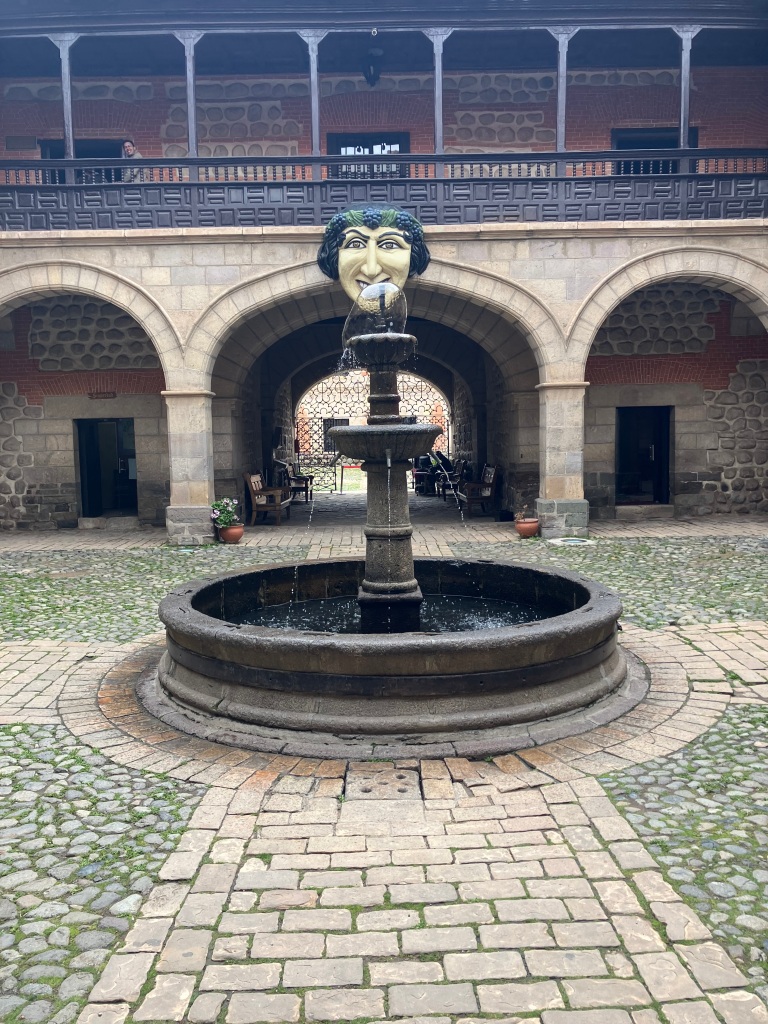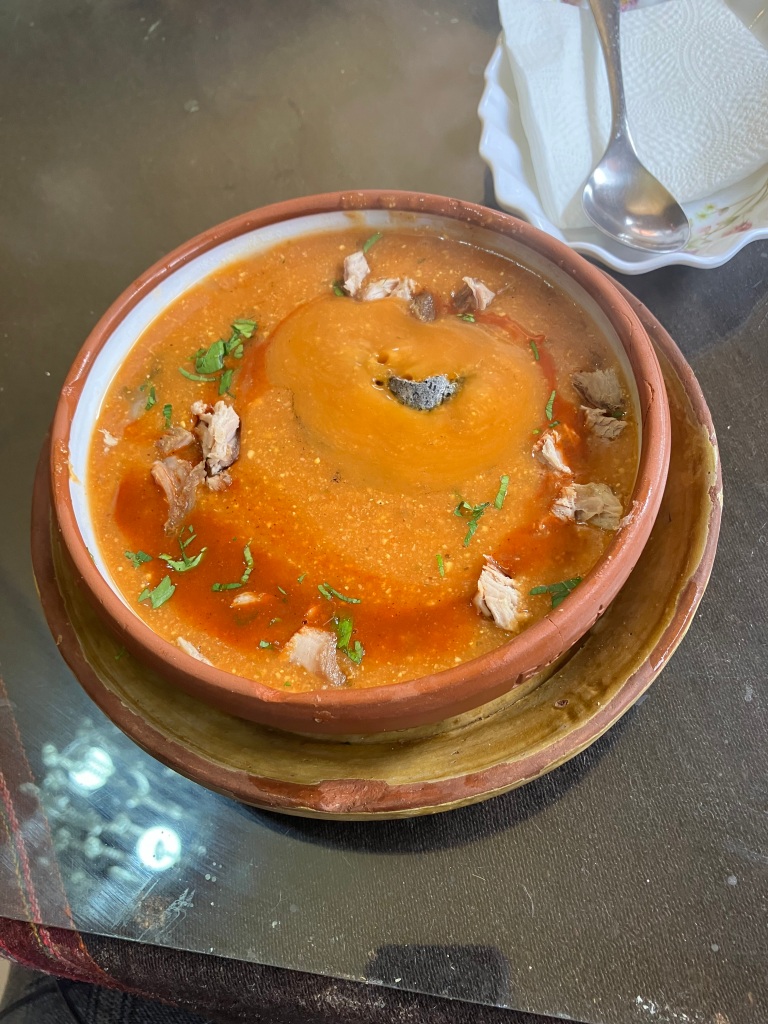I did a few other things in Potosí besides go to the Cerro Rico. I gazed out the windows at the nearby mountains and the Cerro Rico itself.

I also visited the archives at the Casa de la Moneda, which complimented the research I had done in archives in Sucre about lay religious associations, and showed some striking parallels to research I conducted in archives in San Luis Potosí. My biggest disappointment was that I was not able to see the painting of the Virgen del Cerro – because the balcony was unstable or some other unspoken reason.

I ate some really good food. K’alapurka is soup that is kind of like pozole served with volcanic rocks. I had been advised that the best place was near the cemetery but it was never open when I was near there, so I tried it at a place that is so famous is even has a YouTube clip.

My tour guides had several recommendations for me, like going to a special mass on Bolivian Father’s Day, which is the Feast day of St. Joseph. A mining cooperative, named after St. Joseph/San Jose, organized a mass and celebration each year to honor their cooperative and remember deceased miners.
They also took me on an extra tour – the Monday I was in Potosí don Grover took me to the cemetery. We went on Monday because that is the day when most people go to the cemetery to look after their loved ones’ graves. Once we arrived, we drank some chicha (fermented corn drink) out of dried squash husks. Then we walked into the cemetery. I noticed right away that there were people praying the rosary – you can pay to have blind or visually impaired people to pray for your loved ones. I think this is so they can get to heaven because I think purgatory is still official Catholic doctrine. If it is not official Catholic doctrine, it is definitely part of Catholic practice.

Three things stuck out to me about this cemetery. First, was that the cemetery was divided into areas – unions, professional associations and large mining cooperatives all had their own blocks of the cemetery. Second, was that people could only be buried for a very short period of time, and while the cemetery and municipal authorities are supposed to let you know so that you can arrange to have your loved one cremated it is very easy to miss this communication. Third was that people whose loved ones had died more recently were gathered in groups around the grave, perhaps cleaning it or leaving an offering or flowers. I would be interested in returning to Potosí to read cemetery records – or perhaps these are held in one of the archives I already visited in Sucre.
I am not as prolific of a cemetery visitor (or photographer) as Erin Unger but I had some photographs of cemeteries where my great-grandmother and some great aunts and uncles are buried in Mexico so I could share that with my tour guide as he was sharing so much of his own experience with me. It might be for the best that I don’t have any pictures of loved ones in their coffins because that is a cultural practice that is somewhat difficult to explain – so difficult that I even wrote an academic article about it (which I can send in PDF if this link doesn’t work). Or, it could have been a really interesting cultural interaction. We’ll never know.
